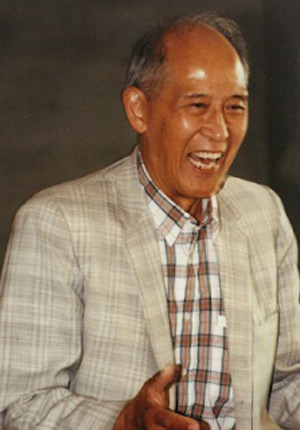
Tien Wei Yang, 1991
Tien Wei Yang’s Work as a Sonoran Desert Ecologist
Philip C. Rosen
December 6, 2018
I never had an opportunity to meet with Tien Wei Yang, even though his home, densely surrounded by creosote bushes, was just under a mile from mine. There had been some sort of disagreement involving Tien Wei and the University of Arizona that, based on written but not entirely clear materials I came across, also involved Dr. Lowe in an unfavorable way. Lowe never brought any of this up with me, and I assumed he was ashamed of it. In any case, Tien Wei’s work had be important to Lowe, and I also found it useful.
Although most famous for his creosotebush genetics work, Tien Wei Yang’s work on the desert slope gradient, which was done in Avra Valley and Tucson Mountains (Yang 1950, 1957) was seminal for understanding Sonoran Desert landscapes, and resulted in Lowe’s first top-journal scientific publication (Yang and Lowe 1956). This work reported that the slope gradient was also strongly associated with a gradient from course to fine soils, which resulted in a gradient plant-available soil moisture and in vegetation structure and complexity, which, along with soil texture directly, translated into a gradient in community structure of amphibians and reptiles. For obvious reasons, these gradients also importantly govern community structure of, essentially, all other animal groups (e.g., Tomoff 1971). Yang’s work with Lowe remains key for understanding desert landscapes, and established a basis for more refined and informative further work on desert soils development and vegetation structure (McAuliffe 1994, 1999a&b, 2004).
The desert landscape ecology work led by Yang has guided my work on faunal change in the Avra Valley region. Fortunately, Tien Wang was quite meticulous in mapping and describing his study sites (Yang 1957, p. 5), and I have been able to resurvey sites for which he reported Urosaurus graciosus and Phrynosoma goodei where I now find only U. ornatus and P. solare, as elsewhere in Avra Valley. The first two, along with the Tucson shovel-nosed snake, which also is missing in recent surveys, occurred primarily in the fine sandy soils at the lowest end of the desert landscape gradient, and were at or near their geographic and elevational range limits.
MCAULIFFE, J.R., 1994. Landscape evolution, soil formation, and ecological patterns and processes in Sonoran desert Bajadas. Ecological Monographs 64, 111–148.
MCAULIFFE, J.R., 1999a. The Sonoran desert: landscape complexity and ecological diversity. In: Robichaux, R.H. (Ed.), The Ecology of Sonoran Desert Plants and Plant Communities. University of Arizona Press, Tucson, pp. 68–114.
MCAULIFFE, J.R., 1999b. Desert soils. In: Phillips, S.J., Comus, P.W. (Eds.), A Natural History of the Sonoran Desert. University of California Press, Berkeley, pp. 87–104.
MCAULIFFE, J.R., 2003. The interface between precipitation and vegetation: the importance of soils in arid and semiarid environments. In: Weltzin, J.F., McPherson, G.R. (Eds.), Changing Precipitation Regimes and Terrestrial Ecosystems: a North American Perspective. University of Arizona Press, Tucson, pp. 9–27.
TOMOFF, C.S. 1971. BREEDING BIRD DIVERSITY IN THE SONORAN DESERT CREOSOTEBUSH SSOCIATION. PhD dissertation, University of Arizona, Tucson, AZ, USA. Ix + 48 pp.
YANG, T.W. 1950. Distribution of Larrea tridentata in the Tucson area as determined by certain physical and chemical factors of the habitat. Master’s thesis, University of Arizona, Tucson, AZ, USA. Iii + 47 pp.
YANG, T. W. 1957. Vegetational, edaphic, and faunal correlations on the western slope of the Tucson Mountains and the adjoining Avra Valley. PhD dissertation, University of Arizona, Tucson, AZ, USA. Xiii + 166 pp.
YANG, T. W., AND C. H. LOWE. 1956. Correlation of major vegetation climaxes with soil characteristics in the Sonoran Desert. Science 123:542.